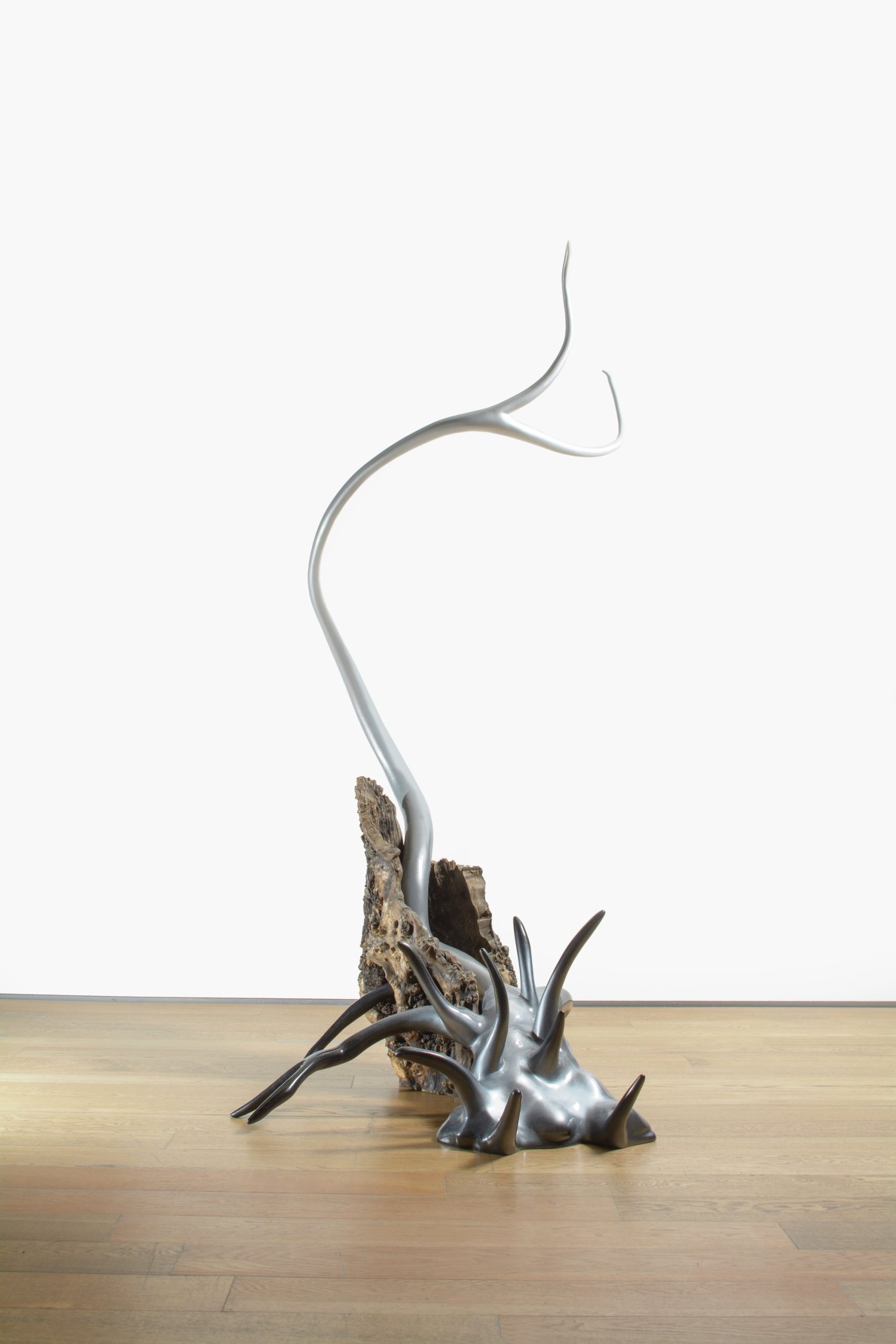Miguel Harte (Buenos Aires 1961) is considered one of the most important Argentine sculptors of his generation. He emerged into the public eye in the context of the artists who generated the vernacular scene that developed around the Rojas Cultural Center in the 1990s, and that marked contemporary Argentine art. Despite associating with that group of artists, his work has its own characteristics that distinguish him and make him unique and not easily classifiable within a current.
Self-taught, he received informal mentoring from artist Pablo Suarez, a friend of his father. His is a look crossed by emotionality, nourished by sources such as science fiction, B-class cinema, the observation of nature and the inclusion of his daily and experiential environment. In his practice, the exchange with the materials that on each occasion disturbed his imagination is key and where he chose those linked to everyday aesthetics, leading him to explore a wide catalog, which ranged from party favors to materials from the decoration industry. , investigating, for example, both the techniques and materials of automotive paint, as well as the conservation methodology used by entomologists.
Harte’s work has been characterized by viscerality, fantasy linked to biomorphism, allusions to a dislocated and mutant nature, – foreseeing the problem of distortions of the natural as a result of human activity, an unavoidable problem today – that at times They push it towards the abject or monstrous. At the same time he has been noted for a refinement in the materiality of his objects, achieved through his impeccable technical skill.
In an essay on Harte’s work, curator Nancy Rojas highlights that in the history of art the monstrous “takes shape in the fissures of stories, in transitions, in precarious gaps” and adds that “…the impetus “Harteano arranges to subject us to interpreting the irregularity… to enter into kinship with it, to become compatible with the repulsive to agree on other forms of imagination…”


 Harte Miguel
Harte Miguel